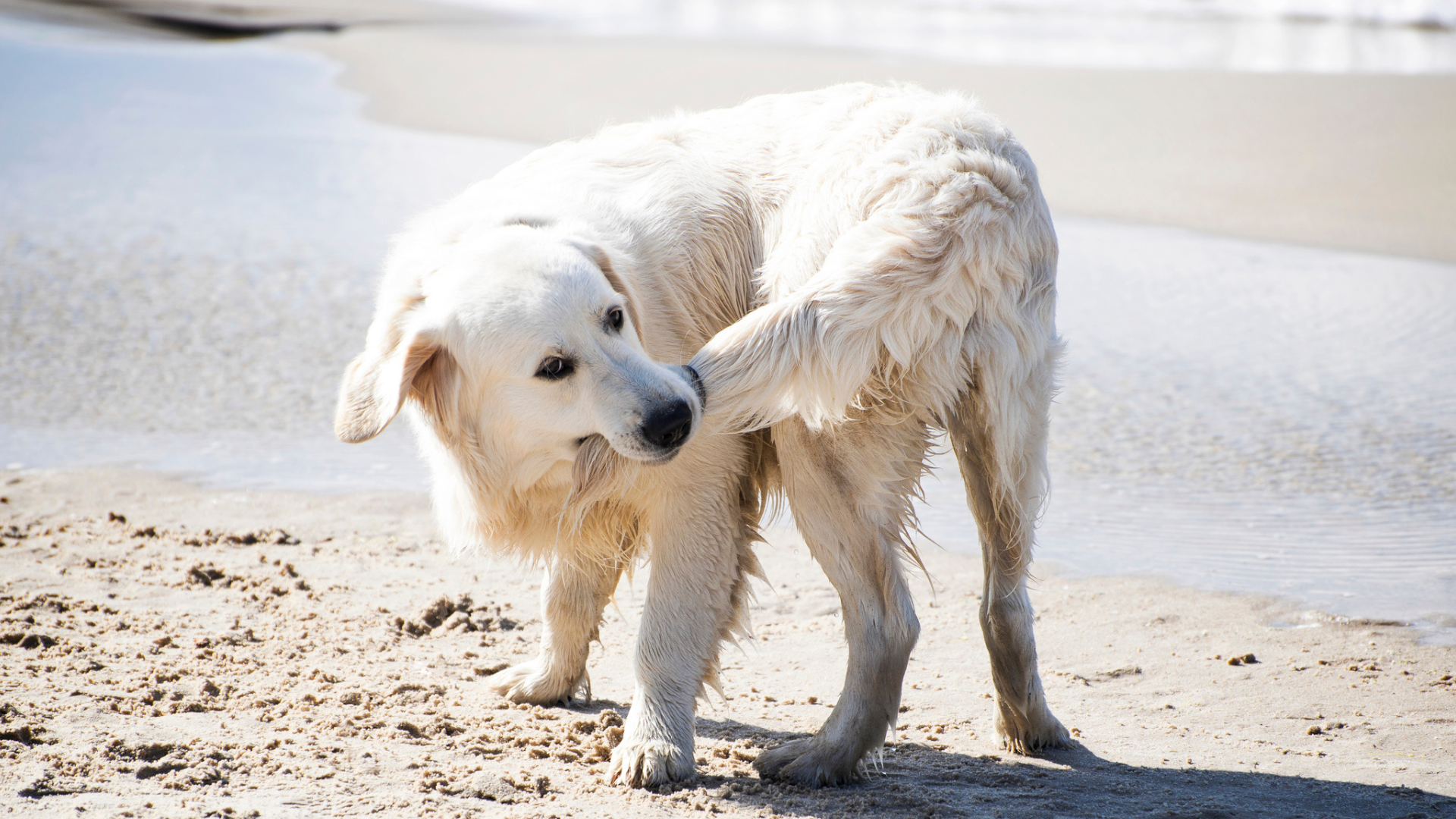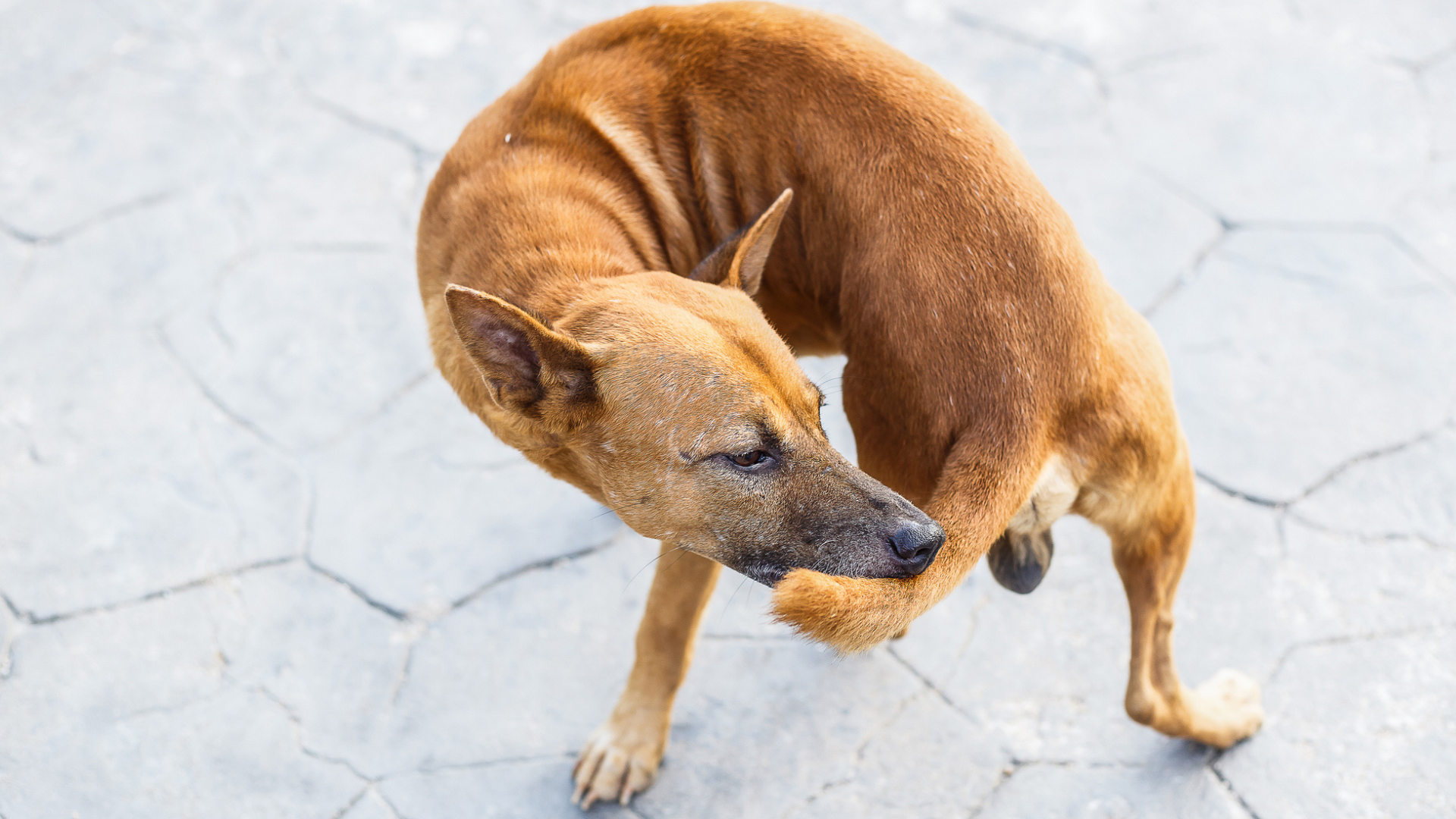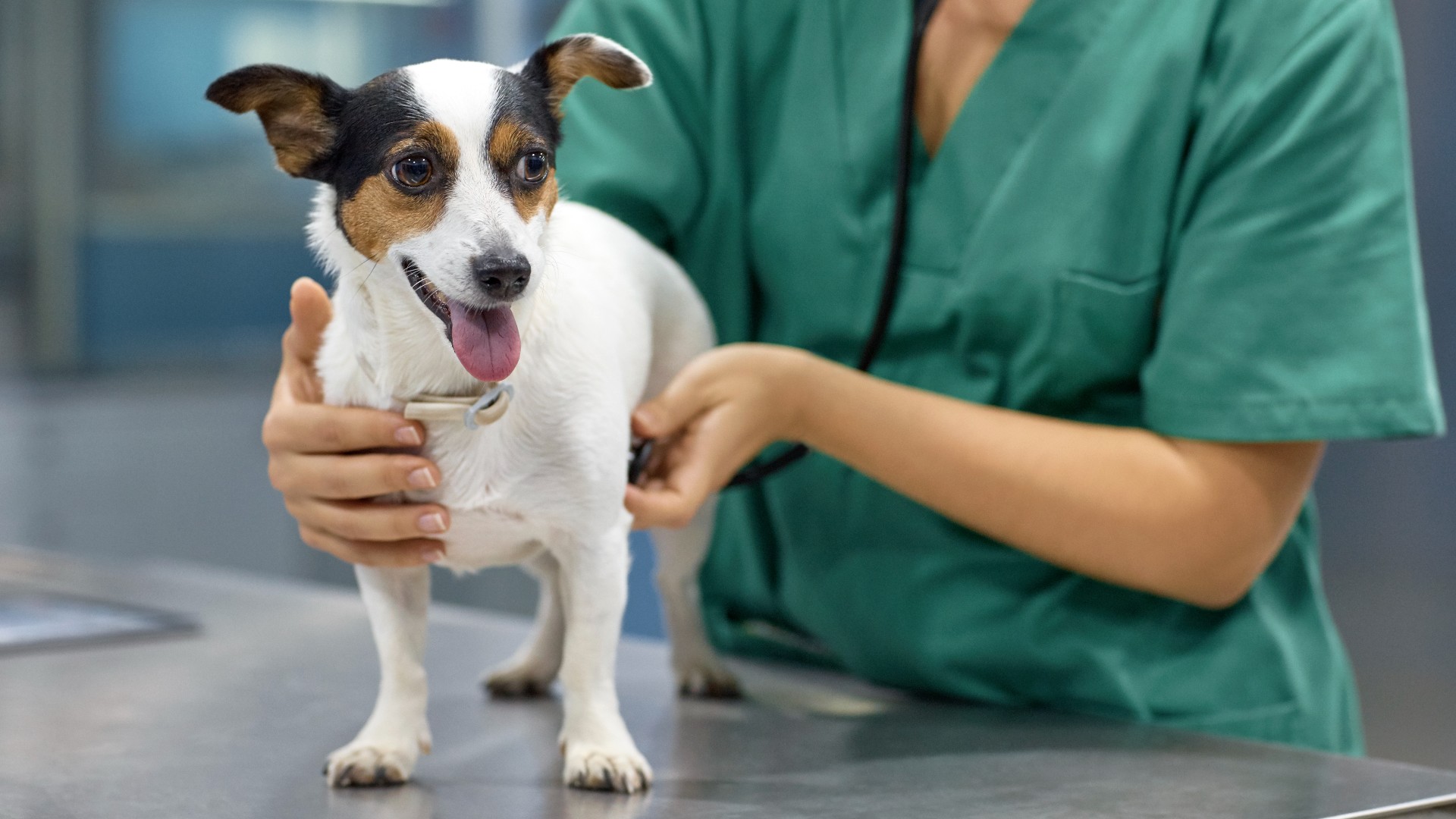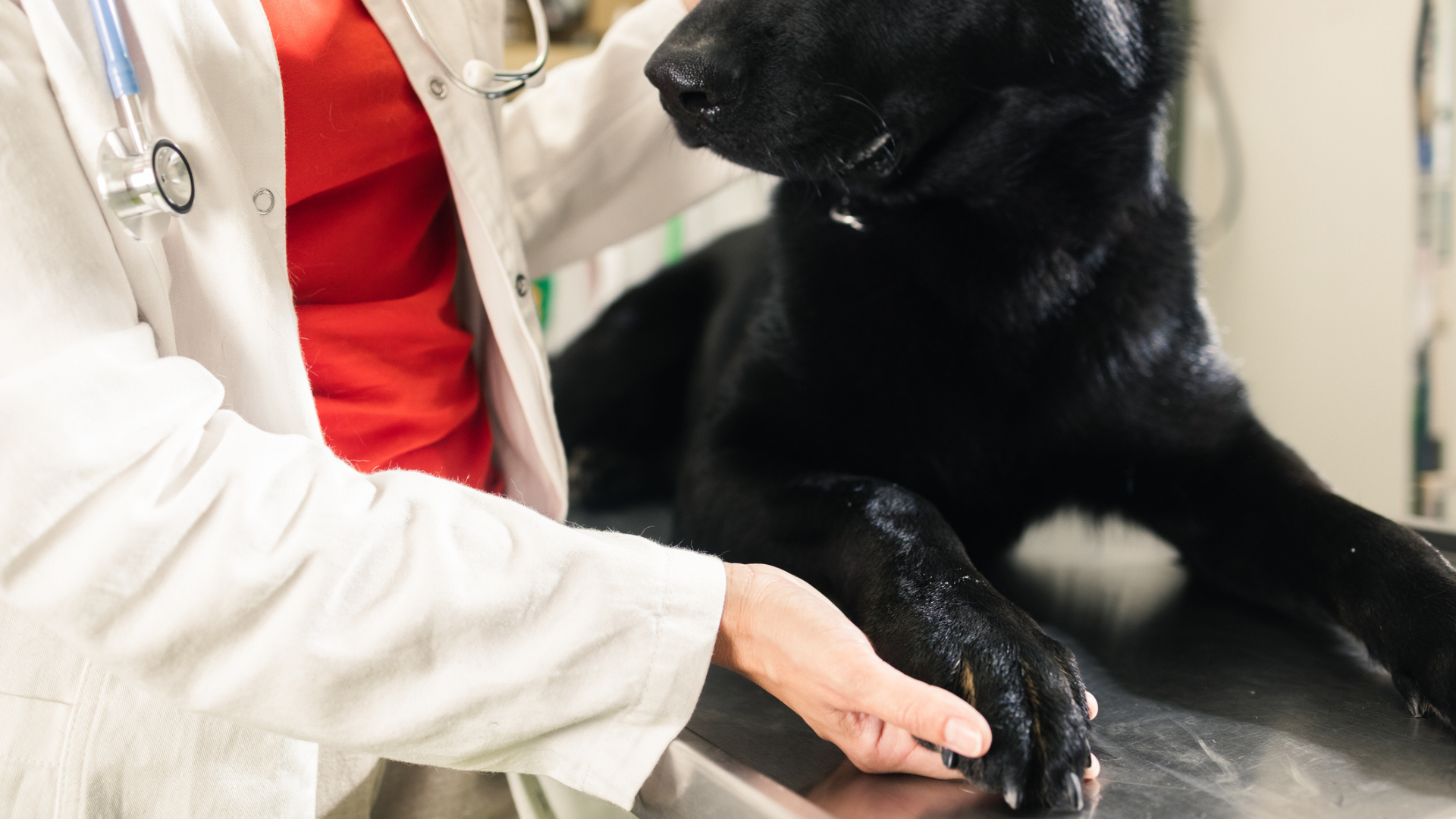
Have you noticed your dog spinning in circles? If the answer is yes, then it’s a good idea to take them to the vet – especially if they have other accompanying symptoms. This behavior might be funny and adorable to watch, but it could be a sign of something more serious.
It’s totally normal for your dog to spin in circles before certain activities, like lying down or urinating, but if it’s becoming a regular thing, it’s best to have them checked over to be on the safe side. It’s times like these that the best pet insurance comes in handy.
You probably have lots of questions about this behavior, like what it means, how to treat it, and when to consult a professional. That’s why we asked expert vet, Dr. Diana Hasler for her advice:
Why do dogs spin around in circles?
Many dogs spin in circles when performing normal activities such as lying down, urinating, or defecating. Some experts suspect that this is an instinct passed down from wolves for protection.
When this behavior becomes excessive or persistent, however, it can be a sign of an underlying issue:
Behavioral problems
Dogs with certain behavioral problems, like anxiety in dogs, may perform relentless circling or other repetitive behaviors like excessive licking as a means of stress relief.
Dogs who are bored or frustrated due to a lack of mental stimulation or exercise and dogs who become overexcited when they see people, other dogs, or wild animals may do this as well.
OCD in dogs, which is very similar to OCD in humans, may spin in circles or tail chase incessantly. Dogs with canine dysfunctional behavior, similar to autism spectrum disorder in humans, may also perform these behaviors, as do dogs with canine cognitive dysfunction, or “doggie dementia.”

Medical issues
Spinning behaviors can also be caused by medical conditions affecting the vestibular system.
The vestibular system is responsible for balance and the spatial orientation of the eyes, head, trunk, and limbs in relation to the environment. The vestibular system is comprised of two components—central (the brain—specifically the cerebellum and brainstem) and peripheral (the inner ear and vestibulocochlear nerve).
When it is affected, dogs show signs such as circling in one direction, head tilt (in the same direction as circling), incoordination, vomiting, nausea, and repetitive, uncontrolled eye movements (or nystagmus).
Medical causes of vestibular symptoms such as spinning in circles include:
- Middle or inner ear infections, which can progress from an infected external ear canal when the eardrum ruptures, among other reasons
- Brain tumors
- Hypothyroidism
- Toxicities, including chlorhexidine, aminoglycoside antibiotics, metronidazole overdose, cisplatin, certain diuretics, and lead poisoning
- Head trauma
- Infections of the central nervous system, including viral (i.e., distemper in dogs), bacterial (i.e., Rocky Mountain spotted fever, ehrlichiosis), protozoal (i.e., toxoplasmosis), fungal, and parasitic infections
- Inflammation of the brain and/or meninges (the membranes surrounding the brain and spinal cord)
- Stroke
- Nutritional deficiency in thiamine (vitamin B1)
- Severe liver disease, which can cause a build-up of toxins in the bloodstream affecting the brain
- Congenital issues like hydrocephalus

Idiopathic vestibular disease
In the absence of an identified medical or behavioral cause of vestibular symptoms, a dog will likely be diagnosed with idiopathic vestibular disease. As its name suggests, it is not known why this condition occurs.
Dogs with idiopathic vestibular disease present with a sudden disturbance in balance and often exhibit a head tilt with circling, disorientation, and nystagmus. This disease is seen most frequently in older dogs, with an average age of onset of 12-13 years.
Diagnosing spinning in dogs
Finding a solution to a dog’s circling is dependent on the underlying cause of the behavior. Because of the numerous possible causes of spinning in dogs, treatment options and prognosis can vary greatly, and an accurate diagnosis is crucial to determine an appropriate treatment plan to reduce spinning behaviors.
To reach the correct diagnosis, a veterinarian will obtain a thorough clinical history, including the duration and frequency of the circling behavior, whether it has progressed, the dog’s travel history, any coexisting diseases, and any medications or supplements that they are given (like tramadol for dogs or gabapentin for dogs).
They will then perform a full physical examination, including a neurological exam and visualization of the ears with an otoscope to look for any involvement of the central or peripheral vestibular system. A comprehensive blood test and urine test will likely be performed as well.
If a specific cause is not identified based on these findings, the vet will recommend additional diagnostic tests like imaging, screening for infectious diseases, or further blood tests.
They may also recommend referral to a neurology specialist for advanced imaging like MRI and CT and cerebrospinal fluid analysis or to a certified vet behaviorist if they suspect the spinning is behavioral in nature.

Treating and managing spinning in dogs
The treatment or management of circling will depend on what is identified on these examinations. For example, a dog with an inner or middle ear infection will be prescribed antibiotics, and a dog with hypothyroidism will receive thyroid hormone supplementation.
Dogs with behavioral conditions should receive behavior modification training to try and minimize circling behaviors, and some may benefit from medications (i.e., Prozac for dogs with canine compulsive disorder).
No treatments have been found to be effective in treating idiopathic vestibular syndrome, but it usually resolves on its own within three to four weeks. Dogs with this condition may benefit from supportive care, including ant nausea medications, IV fluids, and hospitalization until they can walk and eat on their own.
Some cases may also require sedatives to calm them down, as the initial disorientation can be distressing. It is important to note, however, that affected dogs may have a permanent head tilt with circling. Luckily, these dogs can lead happy and healthy lives despite this abnormality.

When should I consult a vet?
As previously discussed, it is common for dogs to spin in circles before lying down or going to the bathroom. However, many medical causes of circling behaviors in dogs can be life-threatening, and both medical and behavioral conditions benefit from early diagnosis and treatment.
For this reason, when circling behaviors are persistent and accompanied by other symptoms, or if they interfere with a dog’s daily routine, vet advice should be sought as soon as possible.
Are you wondering why do dogs chase their tails? This feature explains six reasons for this common behavior.







